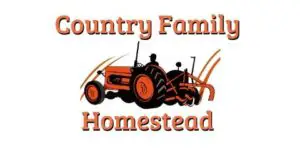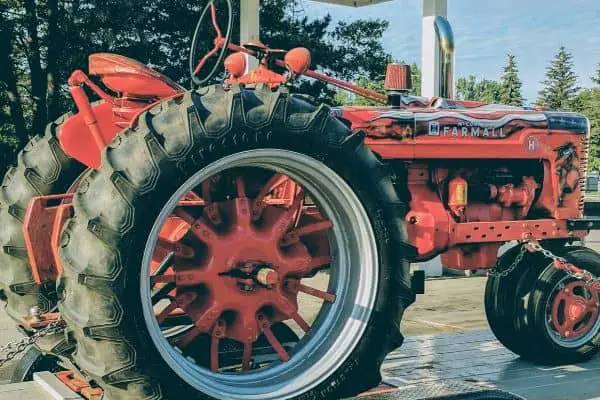We are used to cars and other vehicles that have four (or more) wheels of all the same size. Almost everything with an engine has identical wheels all the way around. Everything, that is, except for tractors. Tractors have huge wheels on the back end and smaller wheels in front. What gives?
Why do tractors have larger wheels at the back? Tractors are optimized to pull. More than any other kind of vehicle (even semi-trucks), tractors are meant to hook up to heavy stuff and drag it around, no matter what might get in the way. Big tires allow tractors to apply the most pulling force to plows and other heavy implements.
They aren’t all that fast, most are not very comfortable, but tractors can get more pull from less horsepower than anything else on wheels.
Why is Pulling Important?
Even the biggest truck tows things that are on wheels. No matter how heavy the load, trucks get an assist from mechanical equipment to make the load move easier. On the other hand, tractors move things that don’t want to move. Plows, loaders, and grader blades must fight against piles of dirt. Mowers get dragged through thick grass and brush. Balers and harvesters deal with the full weight of crops and hay.
With all that weight to move, tractors need all the help they can get. Big rear wheels assist a tractor’s pulling power in many ways. Let’s look at some of the specific ways those giant wheels help tractors.
Leverage
Big wheels mean significant leverage. Picture a lever that is long on the side you move and short on the side that is working. The long lever throw multiplies the force you put in so that you can lift the most weight on the short side. A long-handled wrench works on the same principle. The longer the handle, the more torque you can apply on nuts and bolts.
Wheels work on the same principle – a big wheel multiplies the force that is put out by the axle. Tractors with twenty to forty horsepower can pull hefty loads. Since tractors are used to pull plows, planters, hay balers, and other heavy farm equipment, pulling power is what is needed.
A tractor with a relatively small engine can out-pull a car with more horsepower but smaller wheels. The trade-off is speed. Tractors with their big wheels aren’t fast at all. Most tractors have a top speed somewhere between twenty and thirty miles per hour, some even less. You’ll never win a race with a tractor, but you can pull enormous weights.
What Difference Does It Make?
The big back wheels make a world of difference when it comes to pulling. They are needed because of the differences in horsepower. Half-ton pickups – popular models like the Ford F-150 and the 1500 series from Chevy, GMC, and Ram – are equipped with engines that produce between 200 and 400 horsepower. Compact tractors that are commonly found on homesteads provide a tenth of that.
Whether you have the latest model of a compact tractor, or one like your grandpa drove in the 50s, most small tractors make between 20 and 40 horsepower. That is more than enough to plow, plant, move hay bales, and most other tasks on a small farm or homestead. It’s even enough to pull a pickup out of the mud. (True story – a 32 HP Kubota will drag a 400 HP/5,200 pound pickup out of axle-deep mud.)
Traction
Big wheels also provide better traction. Pulling power is limited by how much grip the wheels have on the ground. Wheels that slip and spin don’t pull. Big, wide wheels have a larger contact patch than smaller wheels. The big contact patch grabs more of the ground and keeps the wheel from slipping.
You may have seen strongmen on TV who hold back a pair of cars pulling on ropes. The cars are always high horsepower machines with slick tires, and usually on grass. The tires spin quickly and slip on the grass, reducing the amount of pull the strongman must fight. You would never see this with tractors, even small ones – the big contact patch keeps the wheels from spinning and lets the tractor pull hard.
Traction is crucial for pulling heavy loads. When you pull something, power only counts if it is delivered to the ground and helps the tractor move forward. If the wheel breaks loose and spins, you are wasting gas (and time). A taller, wider wheel gives the biggest area of contact against the ground.
When Wheels Stick Too Hard
Occasionally, a wheel can stick to the ground too hard. This usually occurs when you are trying to move a fixed object, like yanking a stump out of the ground. The wheels dig in, the stump stays stuck, and the front end of the tractor rises up in the air. This is a dangerous situation – keep going, and you will flip the tractor over backward.
Modern tractors have rollover protection systems to keep you from being squished, but they can still flip and cause problems. Most older tractors don’t have a ROP (roll-over protection system). They can flip and cause a fatal accident. There are a couple of ways to prevent flipping a tractor when pulling a stump:
- Weight the front end. Most tractors have a weight bar on the front bumper. Adding iron suitcase weights help keep the nose of the tractor down.
- Grab some dirt. If your tractor has a front-end loader, you can scoop up some dirt to play the role of the suitcase weights. It’s free, and the bucket has more favorable leverage than the weight bar.
- Gear down and take your time. Use the lowest gear available to maximize pulling power and minimize speed. If you are going slowly, you have more time to see the front end start to lift so you can react.
- Go backward. If you run the tractor in reverse and run the chain underneath it, pulling a fixed object will push the front wheels down into the ground rather than lifting them. This is a much safer way to pull with an old tractor.
Compaction
The big tires are essential in an agricultural setting because they are easier on the soil. The large contact patch spreads the weight out more and provides less pressure on the ground. Too much pressure makes ruts, compacts the soil, and damages crops. If you keep driving on the same spot over and over with small wheels, you get packed soil that won’t grow anything. This problem is worse if the soil is muddy.
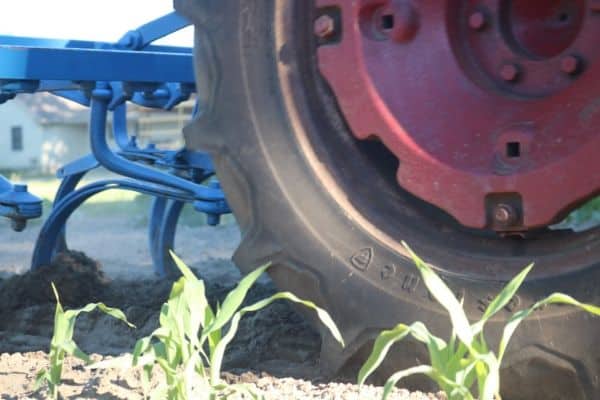
Reducing compaction is part of why you see tractors with two or even thee back tires on each side. More tires mean even less weight under each tire so the tractor can float over soft or muddy ground. Avoiding compaction is crucial for farmers who need to get work done when the season is right, regardless of soil conditions. When it’s planting time, the seeds need to go into the ground – even if it’s muddy.
Big tires are also handy when you need to work a field with growing plants. The bigger tires let the tractor sit up much higher so it doesn’t break stems and crush leaves like a lower tractor would, so you don’t get paths of broken crops in the field. That’s nice for mid-season spraying and cultivation operations. A tractor that kills plants isn’t much use on a farm.
Other Reasons
Aside from leverage, traction, and avoiding compaction, there are other ways big back tires help a tractor work better. These are less important than the big three, but they still help in lots of situations.
Weight Distribution
Tractors often lift heavy implements (including backhoes) on the rear of the machine. Big back tires help keep the weight distribution even when lifting plows, mowers, and other items that can weigh as much as the engine. Smaller tires might dig in rather than turning when a farmer lifts a heavy plow with the back of a tractor.
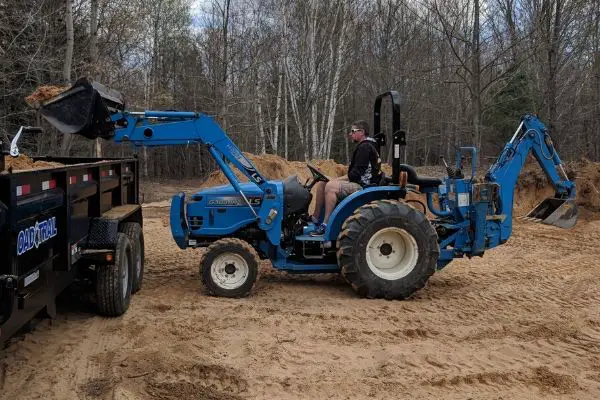
Many tractors are rated to lift implements that weigh 60-75% of the tractor weight. The big back tires help stabilize these loads and keep the tractor balanced when carrying heavy equipment like a disc or a full spray rig.
Ground Clearance
Tall back tires lift the bottom of the tractor up high. High ground clearance is helpful when you are operating in rough or bumpy conditions. It can also reduce crop damage when plants are getting tall. High ground clearance is useful in some specific situations but isn’t needed every day. Mud, brush, and crops are all possible obstructions that big wheels let the tractor float over.
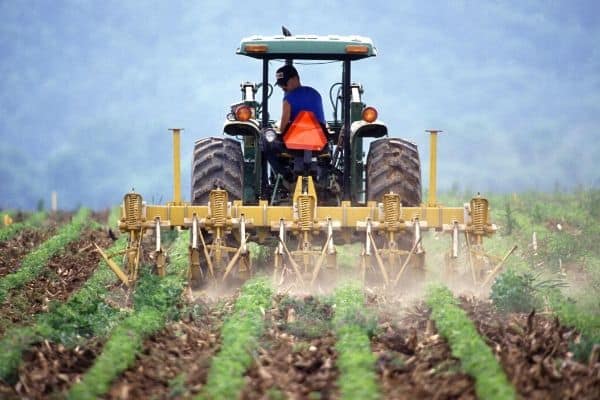
The big wheels are a simple engineering fix to raise the tractor. Rather than a tall suspension, extended driveshafts, and other gear you see under lifted 4×4 trucks, tractors have big wheels. The tractor is lifted, and the problem is solved.
Not Getting Stuck
Big wheels don’t get stuck as quickly as small wheels. When the wheels spin, the tire starts to throw dirt and dig a hole. If the hole gets deep enough, the axle is resting on the ground. If the axle is touching the ground, the wheel isn’t going to get enough traction, and the vehicle isn’t going to move. Big tractor tires fight this in two ways.
First, the big contact patch means the tires keep grabbing the ground and turning instead of spinning. As long as the tire is turning, the tractor is moving forward. Tracks are the best way to avoid lousy traction, but big tires are a close second place.
The tall tires also help out when the wheel does start to dig. It takes a deep hole for a tractor tire to let the axle touch the ground. Big wheels are more likely to catch and start driving forward again than little wheels. Big wheels with aggressive tread can even grab the front of the rut and climb their way out of the mud. That’s a big help when you start to sink.
Smoother Ride
Tractors don’t have any kind of suspension. There are no shocks, springs, or struts to help out when you are driving over rough ground. The big rear wheels can bounce and give a little, even under a load. This helps make the ride smoother than it would be otherwise. (Although it’s still rough – spending a day cultivating with a tractor can be quite a workout.)
Weight
We are used to vehicle design that aims for lightness. The fastest cars are the lightest. Minimizing weight also helps improve fuel efficiency. Giant wheels are heavy, but that’s good for a tractor. Adding weight pushes the tire down on the ground harder, increasing traction and grip on the ground. Some farmers even add brine, washer fluid or beet juice solution inside the rear tires to make them heavier and grip better!
Rear Tire Types
There are a few types of rear tires that have different tread patterns. Different patterns have different uses, and each design has strengths and weaknesses. Choosing the right tire makes your work easier, while the wrong tire will cause problems.
- Agricultural tires are the traditional tractor tires with big diagonal bars that run across the tire. These tires dig deeply into the ground and provide the best traction. Ag tires are the least likely to get stuck, and the best for plowing and other heavy-duty work. They are also the hardest on the ground and can cause ugly marks on the ground.
- Turf tires are balloon-shaped with a pattern of small squares or diamonds on the surface of the tire. Turf tires are the smoothest tire and cause the least soil disruption. The tradeoff is that these wheels have the least traction and are the most likely to slip or spin. As the name suggests, turf tires are best for mowers and other applications on smooth lawns.
- Industrial tires for worksites are a compromise between ag and turf wheels. Industrial tires usually have bars that run straight across the face of the tire. The bars are shorter and flatter than ag tires, but more aggressive than turf tires. Industrial tires are intermediate in traction and soil damage between ag and turf tires.
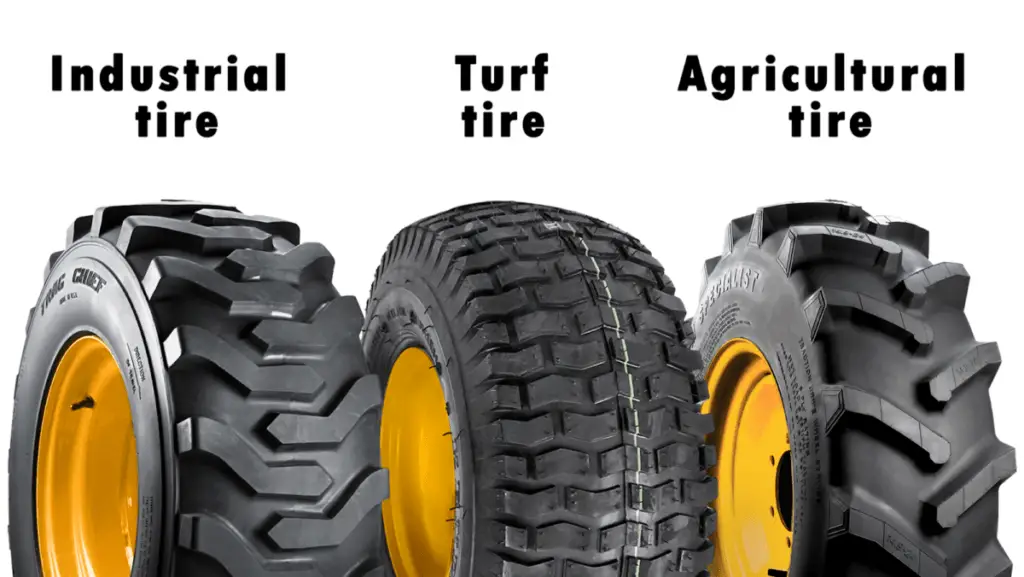
The tire you need depends on how you use your tractor. If your main tractor work is mowing, and you want to keep your lawn looking good, opt for turf tires. If you need to plow or pull other heavy implements, and you don’t care about appearances, ag tires are the way to go. Industrial tires give you a little bit of both worlds.
What About Front Tires?
If big wheels are so great, why aren’t all four tires big, especially on four-wheel-drive machines? For smaller tractors, steering is more important than extra traction. Small wheels can be turned tighter than big ones. The big ones would hit the body of the tractor before you could move them very far. This would severely limit the maneuverability of the tractor.
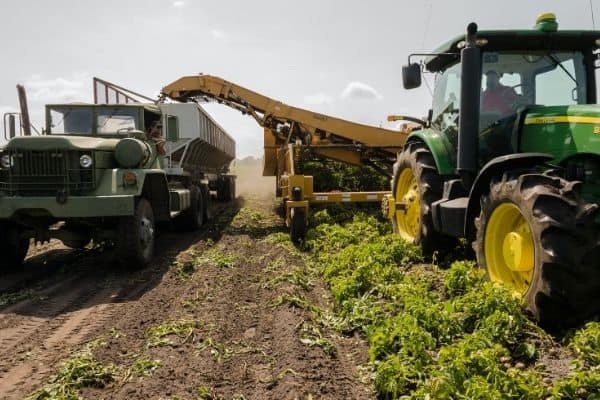
Some tractors have large wheels on the front as well as the back. These tractors also have an articulated frame to help with steering. The huge tractors are used on huge farms to pull massive implements around. When you are plowing one field that covers a thousand acres, maneuverability isn’t a big issue. At that point, pulling power becomes the most significant limit to what a tractor can do. Big wheels all around are best for that.
Small 4WD Wheels
Some modern compact tractors have four-wheel drive but use a small wheel on the front. These machines get some extra pulling power from the front wheels but remain maneuverable. It is a pricey option that lets you squeeze a little more tug from a small engine. The long-term advantage is that you can have a smaller engine that is fuel-efficient with the pull of a bigger engine.
These tractors also work well in the sloppiest mud. Even if the rear wheels dig in, the front wheels keep pulling forward. The back wheels stay in contact with the rut and can climb out and keeps on moving.
How Big Should You Go?
While it can be tempting to shop for the very biggest tractor you can find, avoid that temptation. With tractors, size increases add cost quickly. The most massive articulated 4WD tractors cost more than a house. Implements for those tractors are equally expensive. Unless you are working thousands of acres, you don’t need that large equipment, and you can’t afford it either.
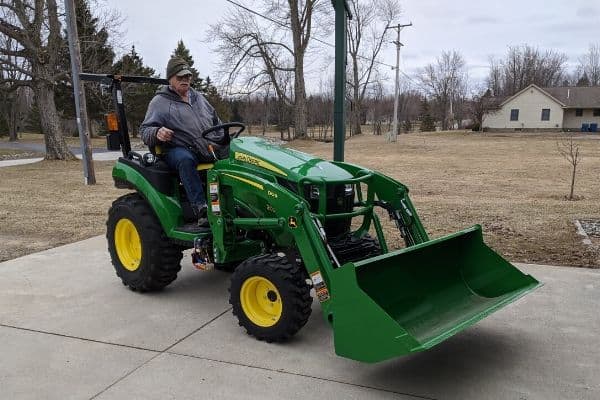
The 20 to 40 HP tractor is the sweet spot for a homestead tractor. It’s big enough to handle any task you can throw at it, but it’s also small enough to be affordable. These smaller tractors are also more maneuverable than the giants. It is much easier to work plots that are just a few acres with a small tractor than a big one.
Strong but Slow
The enormous rear tires on a tractor make it a pulling master. Leverage, traction, and less soil compaction all result from using big wheels. The big wheels also help the tractors float over obstacles, carry heavy implements, and avoid getting stuck. Big wheels are a vital part of the tractor’s ability to get work done.
